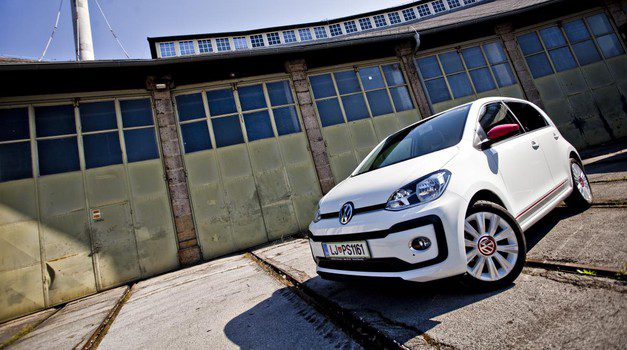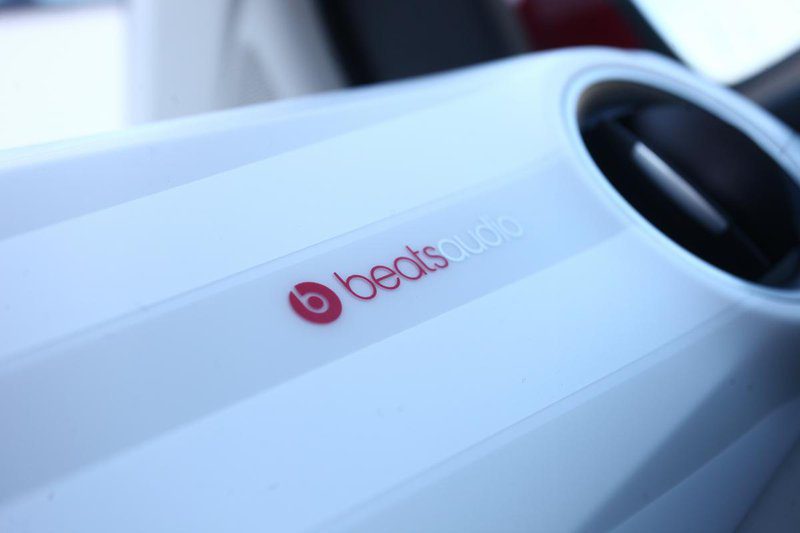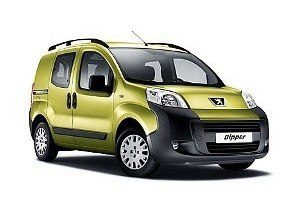
Short test: Volkswagen Up! 1.0 TSI Beats
Volkswagen's Up! The car, which also received the Seat and Škoda versions, recently drove on our roads with an updated image.
The exterior has been slightly modified in terms of design, the front bumper has been redecorated, new fog lights have been installed, and the headlights have also received an LED signature. Also new are some color combinations, a little more freedom is given to individualization of the car.

There are a few visible changes inside, but they are still there. Even more has been done in terms of smartphone connectivity, as Volkswagen now offers an app specifically designed for these toddler owners. Through it, the user will be able to connect to the car, and after installation on a convenient stand on the armature, the smartphone will perform the functions of a multifunctional system. The test version of the Beats was also equipped with a new 300W audio system that could turn this toddler into a Gavioli embassy on four wheels.

The highlight of the new Upo is the new 90-litre petrol engine. Now it breathes with the help of a turbocharger, so the power has also increased to 160 "horsepower" with a very useful XNUMX Nm of torque. Needless to say, this is quite enough for any city transfers, and even short trips on the highway will not be intimidating. Otherwise, driving a Volkswagen baby will remain a completely enjoyable and easy task. The steering wheel is straight and precise, the chassis is quite comfortable, there is no reason to complain about transparency and maneuverability.

We measured lower consumption of the new Up on a standard diagram than its naturally aspirated predecessor. With 4,8 liters per 100 kilometers, this is not quite a record, but it was achieved (for him) by a high speed on the highway. If you drive only around the city and the entrances to the city, this number may be lower.
text: Sasha Kapetanovich · photo: Sasha Kapetanovich
Check out the tests of similar vehicles:
Comparison test: Hyundai i10, Renault Twingo, Toyota Aygo, Volkswagen Up!
Comparison test: Fiat Panda, Hyundai i10 and VW up
Test: Škoda Citigo 1.0 55 kW 3v Elegance
Short test: Seat Mii 1.0 (55 kW) EnjoyMii (5 doors)
Short test: Renault Twingo TCe90 Dynamic EDC
Brief test: Smart forfour (52 kW), edition 1
Extended test: Toyota Aygo 1.0 VVT-i X-Cite (5 doors)
Short test: Fiat 500C 1.2 8V Sport
Up 1.0 TSI Beats (2017)
Basic data
| Base model price: | 12.148 € |
|---|---|
| Test model cost: | 13.516 € |
Costs (per year)
Technical information
| engine: | 3-cylinder - 4-stroke - in-line - turbo-petrol - displacement 999 cm3 - maximum power 66 kW (90 hp) at 5.000 rpm - maximum torque 160 Nm at 1.500 rpm. |
|---|---|
| Energy transfer: | front wheel drive engine - 5-speed manual transmission - tires 185/50 R 16 T. |
| Capacity: | top speed 185 km/h - 0-100 km/h acceleration 9,9 s - average combined fuel consumption (ECE) 4,7 l/100 km, CO2 emissions 108 g/km. |
| Mass: | empty vehicle 1.002 kg - permissible gross weight 1.360 kg. |
| External dimensions: | length 3.600 mm – width 1.641 mm – height 1.504 mm – wheelbase 2.407 mm – trunk 251–951 35 l – fuel tank XNUMX l. |
Our measurements
| Measurement conditions: T = 14 ° C / p = 1.028 mbar / rel. vl. = 55% / odometer status: 2.491 km | |
| Acceleration 0-100km: | 11,3s |
|---|---|
| 402m from the city: | 18,7 years ( 121 km / h) |
| Flexibility 50-90km / h: | 13,9s (IV.) |
| Flexibility 80-120km / h: | 17,3s (V.) |
| test consumption: | 7,1 l / 100km |
| Fuel consumption according to the standard scheme: | 4,8 l / 100km |
| Braking distance at 100 km / h: | 40,2m |
| AM table: | 40m |
| Noise at 90 km / h in 5rd gear | 60dB |
